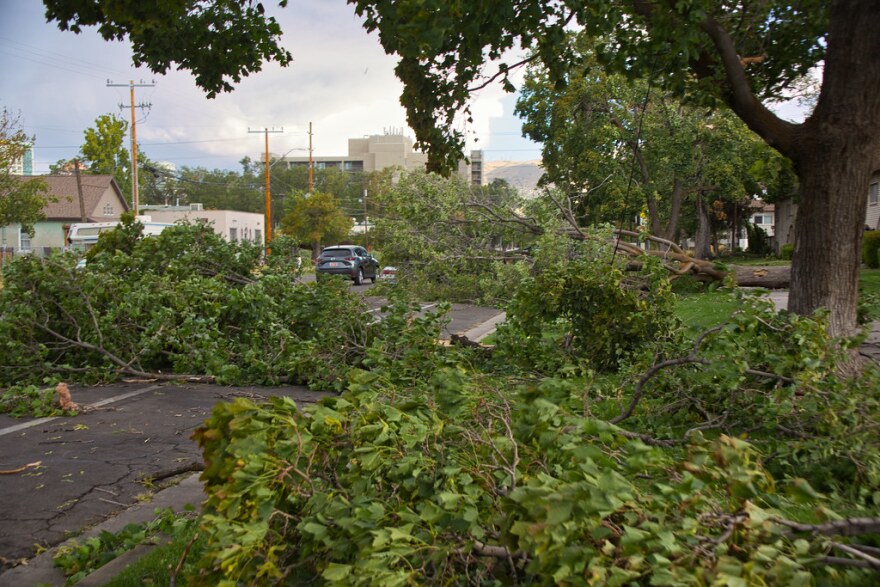As warmer temperatures and extreme weather conditions become more common across the west, power companies are facing greater challenges keeping the lights on.
The issue came into sharp focus recently, after a historic wind storm uprooted trees and sent debris flying, knocking out power for nearly 200,000 Rocky Mountain Power customers in Utah, Idaho and Wyoming.
Before that, a series of earthquakes shook the Salt Lake Valley, leaving some 56,000 people in the dark.
While scientists may not be able to attribute any one of those events to climate change, more extreme weather is expected as the world’s carbon emissions continue and global temperatures rise.
“There's been a lot of talk in recent years about the stability of the grid and the vulnerability of the grid,” said David Eskelsen, a spokesman for Rocky Mountain Power. “But there’s been a lot of work done. There are lots of problems that happen every year that customers never know about because the systems that had been built to handle those problems work properly.”
Eskelsen said the company is making adjustments and improvements all the time. Those efforts include year-round trimming trees, upgrading computer systems that monitor power lines, installing protective devices that help locate where problems are and better coordination between state agencies that can step in when the company runs into problems.
All of those things have helped improve the utility’s reliability rating over the last ten years, he said, which is now at 99.98%.
And while it’s possible to get to 100%, he said that would involve installing at least two electrical feeds to every customer, so that if one fails, another can replace it. Some bigger users, such as a university or hospital, do have multiple feeds, but the cost can add up to millions of dollars.
“For an electric system serving the number of customers that ours does, getting those last two or three tenths of one percent on your system is so prohibitively expensive that it is just not practical,” he said.
Masood Parvania, an electrical engineering professor at the University of Utah who researches grid resiliency, agreed that the cost-benefit analysis for completely weather-proofing the grid doesn’t quite work out, especially given the utility’s existing reliability. And despite the financial barriers, he thinks Rocky Mountain Power has done a good job modernizing its grid, especially compared to utilities around the country.
But Parvania said part of the problem is power companies are facing new challenges now, not only major technological shifts in power generation, but the increasing threat of extreme weather.
“Just like the pandemic caught the whole medical community by surprise, these are also surprises we get in the utility and power world,” he said. “I think they are diligent and they are doing as much as they can, but some of the things that nature does are not really predictable.”
Parvania said one of the best things companies can do is to continue focusing on automating and modernizing their grids, as well as analyzing weather data. Still, understanding the full scope of the problem and the best ways to react will take time.





